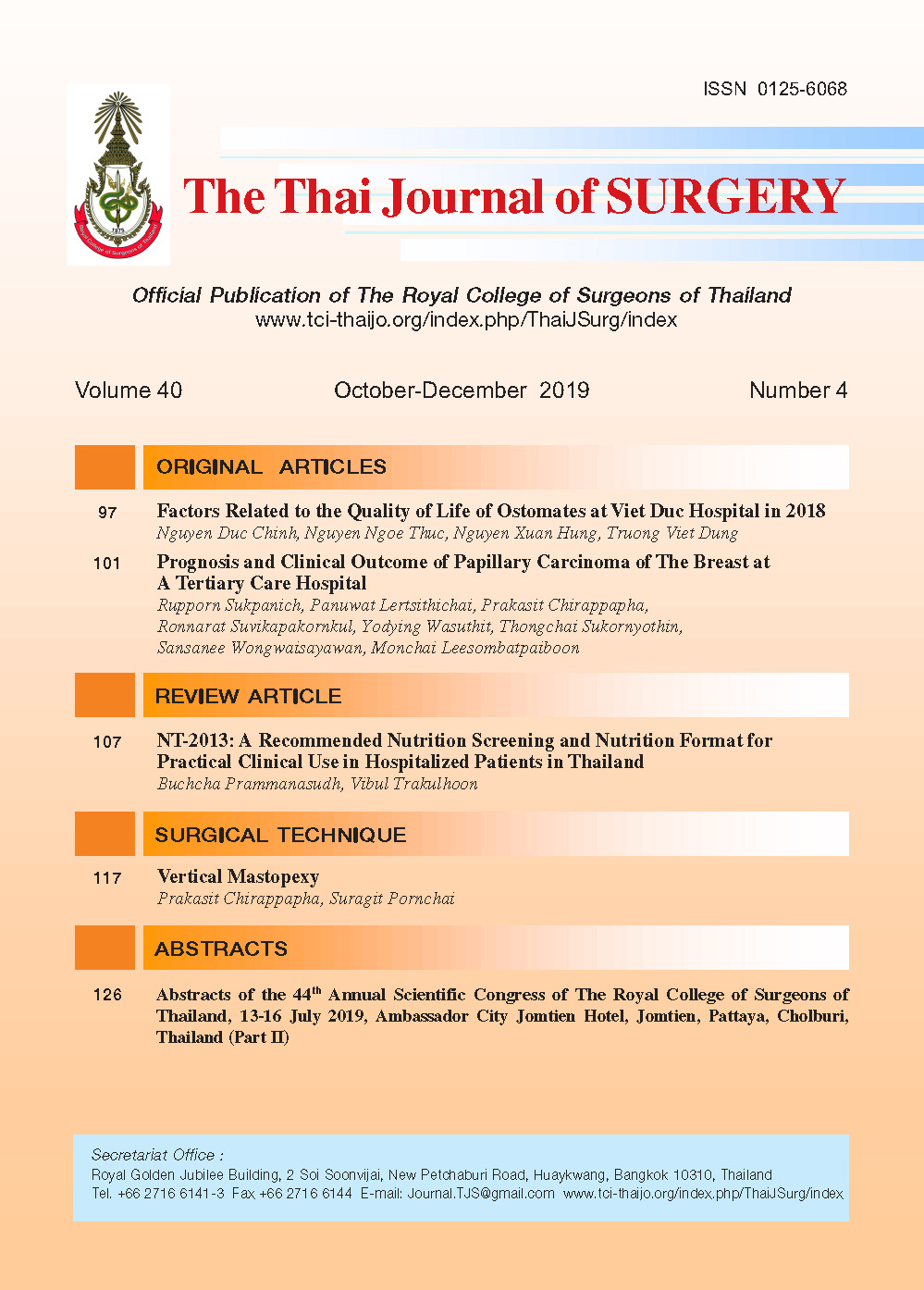Prognosis and Clinical Outcome of Papillary Carcinoma of The Breast at A Tertiary Care Hospital
Keywords:
Papillary breast cancer, Papillary lesions, PrognosisAbstract
Objective: To determine the clinical, pathologic and prognostic features of papillary breast cancer seen at a tertiary care hospital.
Materials and Methods: A retrospective review of medical charts of patients seen during the period between January 2010 to December 2013 was performed.
Results: There were 86 patients with papillary breast cancer who underwent surgery during the period. This constituted 3% of all breast cancer patients who underwent surgery during the same period. The majority (74%) were invasive papillary cancers. Most patients were menopausal with an average age of 61 years. Most cancers were hormone-receptor positive, and HER2 negative. The average tumor size was 2 cm and only 10% had axillary node metastasis. The majority (69%) underwent mastectomy and most (60%) had hormonal therapy as the only systemic adjuvant. Under a median follow-up of 22 months (range; 1 to 53 months), there were no recurrences or deaths observed in the series.
Conclusion: Papillary breast cancer has a very good prognosis and treatment should be minimized in a similar way as a mucinous carcinoma.
References
2. Fisher ER, Palekar AS, Redmond C, et al. Pathologic findings from the National Surgical Adjuvant Breast Project (protocol no. 4) VI. Invasive papillary cancer. Am J Clin Pathol 1980;73:313-22.
3. Gentile A, Becette V. Invasive papillary and pseudopapillary (micropapillary) carcinoma of the breast. Arch Anat Cytol Patho 1996;44:225-30.
4. Pal SK, Lau SK, Kruper L, et al. Papillary carcinoma of the breast: an overview. Breast Cancer Res Treat 2010;122:637-45.
5. Mulligan AM, O’Malley FP. Papillary lesions of the breast: a review. Adv Anat Pathol 2007;14:108-19.
6. Collins LC, Schnitt SJ. Papillary lesions of the breast: selected diagnostic and management issues. Histopathology 2008;52: 20-9.
7. Ueng SH, Mezzetti T, Tavassoli FA. Papillary neoplasms of the breast: a review. Arch Pathol Lab Med 2009;133:893-907.
8. Page DL, Salhany KE, Jensen RA, Dupont WD. Subsequent breast carcinoma risk after biopsy with atypia in a breast papilloma. Cancer 1996;78:258-66.
9. Esposito NN, Dabbs DJ, Bhargava R. Are encapsulated papillary carcinomas of the breast in situ or invasive? A basement membrane study of 27 cases. Am J Clin Pathol 2009;131:228-42.
10. Maluf HM, Koerner FC. Solid papillary carcinoma of the breast. A form of intraductal carcinoma with endocrine differentiation frequently associated with mucinous carcinoma. Am J Surg Pathol 1995;19:1237-44.
11. Nassar H, Qureshi H, Volkanadsay N, Visscher D. Clinicopathologic analysis of solid papillary carcinoma of the breast and associated invasive carcinomas. Am J Surg Pathol 2006;30:501-7.
12. Koerner F. Papilloma and papillary carcinoma. Semin Diag Pathol 2010;27:13-30.
13. Jakate K, De Brot M, Goldberg F, et al. Papillary lesions of the breast: impact of breast pathology subspecialization on core biopsy and excision diagnoses. Am J Surg Pathol 2012;36:544-51.
14. Oh EJ, Koo JS, Kim JY, Jung WH. Correlation between solid papillary carcinoma and associated invasive carcinoma according to expression of WT1 and several MUCs. Pathol Res Pract 2014;210:953-8.
Downloads
Published
How to Cite
Issue
Section
License
Articles must be contributed solely to The Thai Journal of Surgery and when published become the property of the Royal College of Surgeons of Thailand. The Royal College of Surgeons of Thailand reserves copyright on all published materials and such materials may not be reproduced in any form without the written permission.



